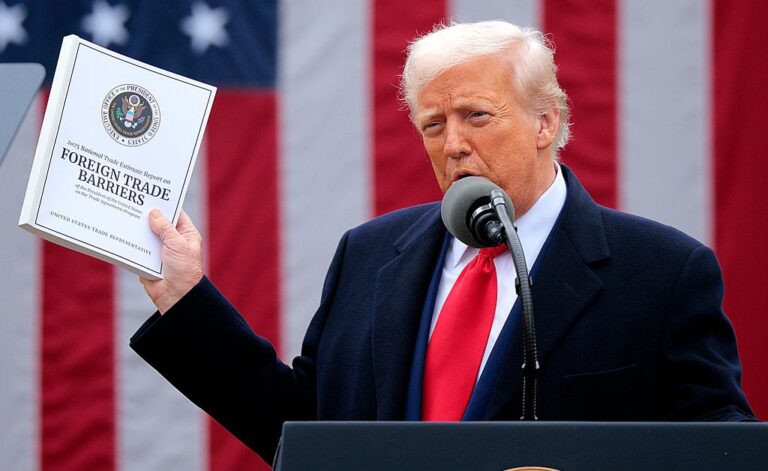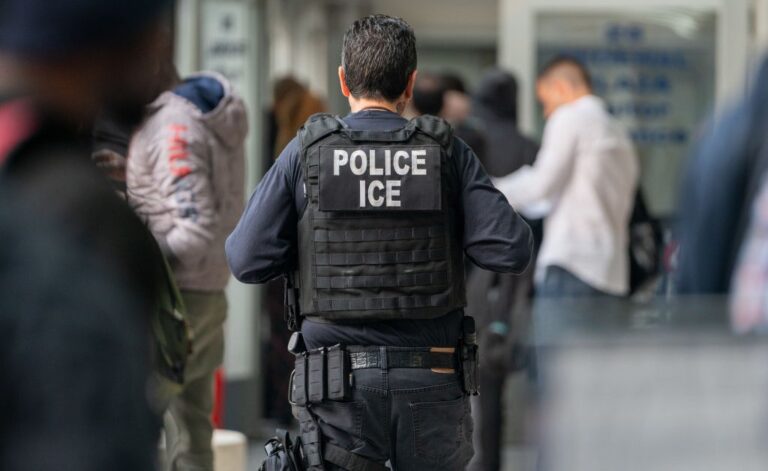Americans could see an uptick in some prices as a result of a series of new tariffs on imported pharmaceuticals, trucks, and furniture that President Donald Trump announced on Thursday, though exemptions and major producers’ already existing—or expanding—presence in the U.S. may limit some of the levies’ impact.
Trump said that beginning next Wednesday, he would introduce a 100 percent tariff on branded pharmaceuticals, a 50 percent tariff on kitchen and bathroom cabinets, a 30 percent tariff on upholstered furniture, and a 25 percent tariff on semi trucks.
The new import taxes mark the latest move in a sweeping tariff agenda that has roiled global markets and touched various sectors of the economy, as well as Americans’ wallets, since Trump returned to office in January.
Pharmaceutical products
The new 100% tariff on pharmaceutical imports appears to make several notable exemptions, which could blunt its impact on many of the drugs Americans are most familiar with and use most frequently.
For one, pharmaceutical companies that are building manufacturing plants in the U.S. will be exempt from the levy, according to Trump’s announcement.
“Starting October 1st, 2025, we will be imposing a 100% Tariff on any branded or patented Pharmaceutical Product, unless a Company IS BUILDING their Pharmaceutical Manufacturing Plant in America,” the President said on Truth Social. “There will, therefore, be no Tariff on these Pharmaceutical Products if construction has started.”
That means that a number of major drug manufacturers that have recently pledged billions into expanding their operations in the U.S. amid Trump’s tariff threats may not have to pay the new duties.
Johnson & Johnson, for instance, is directing $55 billion toward U.S. production; Eli Lilly said earlier this year that it would put $27 billion into building plants in the country. Both, along with other large drugmakers including Merck and Gilead Science, have broken ground on new U.S. facilities this year.
Trump’s announcement also specifies that the tariffs will impact “any branded or patented pharmaceutical product,” suggesting that generic drugs, which use the same active ingredients as their brand-name counterparts but are typically less expensive, may be exempt as well.
Generics represent roughly 90% of prescriptions filled in the U.S and account for a large share of the drugs imported from countries such as India, which would make their exclusion from the levy significant..
Many of the brand-name drugs in the U.S., meanwhile, are either manufactured domestically or imported from Europe—and the European Commission has said that it expects tariffs on pharmaceutical exports from the European Union to the U.S. to remain at the far lower 15% rate Trump previously imposed on many goods from the bloc.
Japan has similarly indicated that it expects to continue facing lower tariffs, pointing to a past joint statement the country and the U.S. made stating that tariff rates on Japanese pharmaceuticals and semiconductors would not be higher than those imposed on other countries, including in the European Union.
“The actual comment from the President is direct but its impact may be somewhere between nebulous and negligible,” Jared Holz, a healthcare equity specialist, reportedly said in a note to clients. “All major players have some production presence domestically and almost all have announced increased investment directly tied towards local manufacturing.”
Furniture
Furniture prices, which have already climbed in recent months as Trump has imposed tariffs on major importers such as China and Vietnam, could be in for more increases as a result of the new levies.
Overall, furniture prices last month were 4.7% higher than they were in August 2024, according to the Bureau of Labor Statistics. Living and dining room furnishings have seen a still steeper rise of 9.5% in the past year.
Much of the furniture that is bought in the U.S. comes from other countries: Sixty percent of all the furniture sold in the country 2022, including 86 percent of wood furniture and 42 percent of upholstered furniture, was imported from Asia, according to the U.S. International Trade Commission.
“We will be imposing a 50% Tariff on all Kitchen Cabinets, Bathroom Vanities, and associated products, starting October 1st, 2025. Additionally, we will be charging a 30% Tariff on Upholstered Furniture,” Trump said in a post on Thursday evening.
“The reason for this is the large scale ‘FLOODING’ of these products into the United States by other outside Countries,” Trump said. “It is a very unfair practice, but we must protect, for National Security and other reasons, our Manufacturing process.”
Trucks
The impact of the tariffs on trucks may be more limited, as—unlike furniture—many of the heavy trucks sold in the U.S. are produced domestically. The American Trucking Association said in May that Mexico is the only country that is a significant importer.
“Heavy-duty tractors bought by U.S. carriers only come from two places: the United States and Mexico. There are virtually no other countries that export finished heavy-duty tractors into the U.S. market,” the group said in a statement.
Trump’s announcement of the tariffs did not directly reference Mexico, but suggested that the President wished to push back against “competition” from unnamed countries.
“In order to protect our Great Heavy Truck Manufacturers from unfair outside competition, I will be imposing, as of October 1st, 2025, a 25% Tariff on all ‘Heavy (Big!) Trucks’ made in other parts of the World,” Trump said in a post.
“Our Great Large Truck Company Manufacturers, such as Peterbilt, Kenworth, Freightliner, Mack Trucks, and others, will be protected from the onslaught of outside interruptions,” Trump said. “We need our Truckers to be financially healthy and strong, for many reasons, but above all else, for National Security purposes!”
Trump has previously levied tariffs on materials such as aluminum, steel, and copper products that have raised costs for domestic truck manufacturers, along with a number of other companies making products in the U.S.
Kimberly Clausing, a professor of tax law and policy at the University of California, Los Angeles, tells TIME that tariffs often make U.S. manufacturing more difficult, despite the Administration’s stated intention to boost domestic production and create jobs for Americans.
“If you look at job creation in 2025 it’s been mostly in sectors like government and healthcare and leisure and travel, not in manufacturing. And in fact, manufacturing job growth has been either weak or declining in 2025,” Clausing says.
Overall, she says, “It just seems like a bizarre series of moves from an administration that was put in office in part to lower prices for households.”








